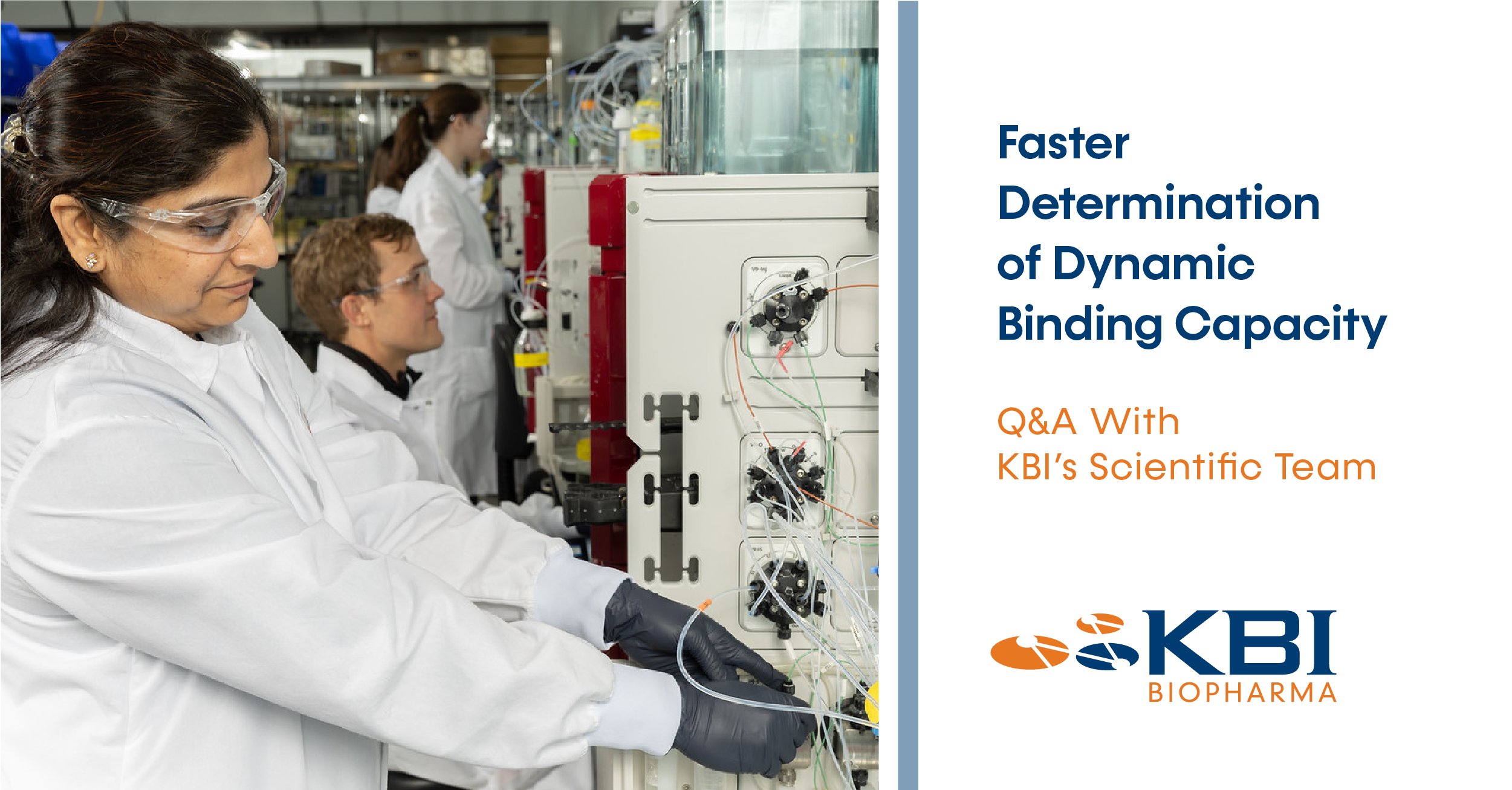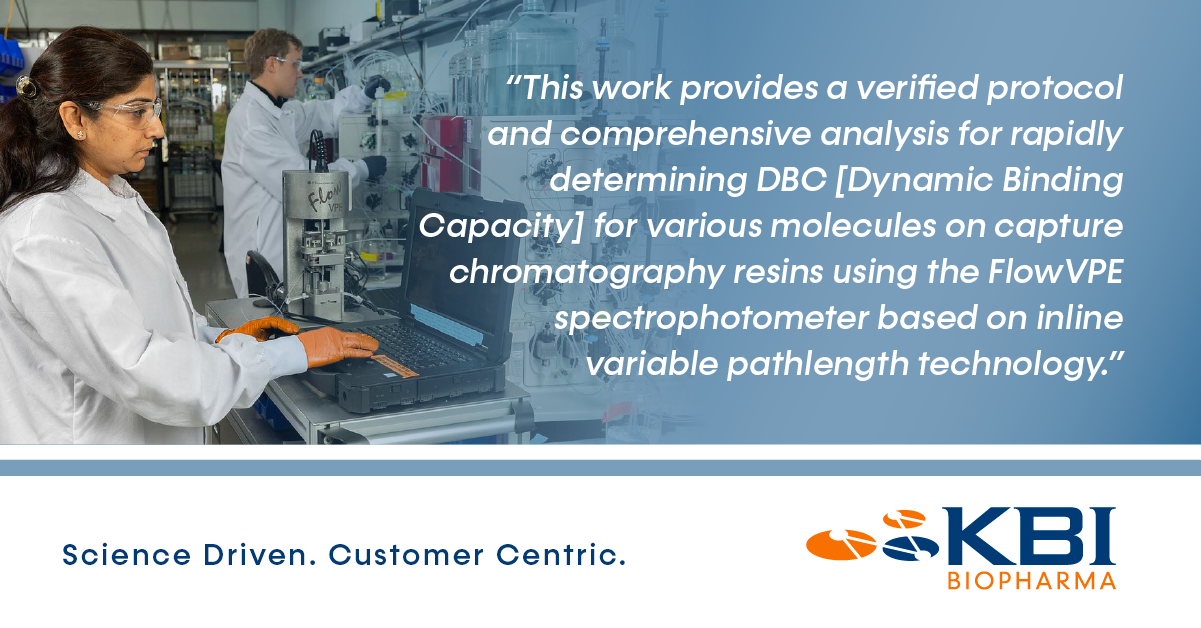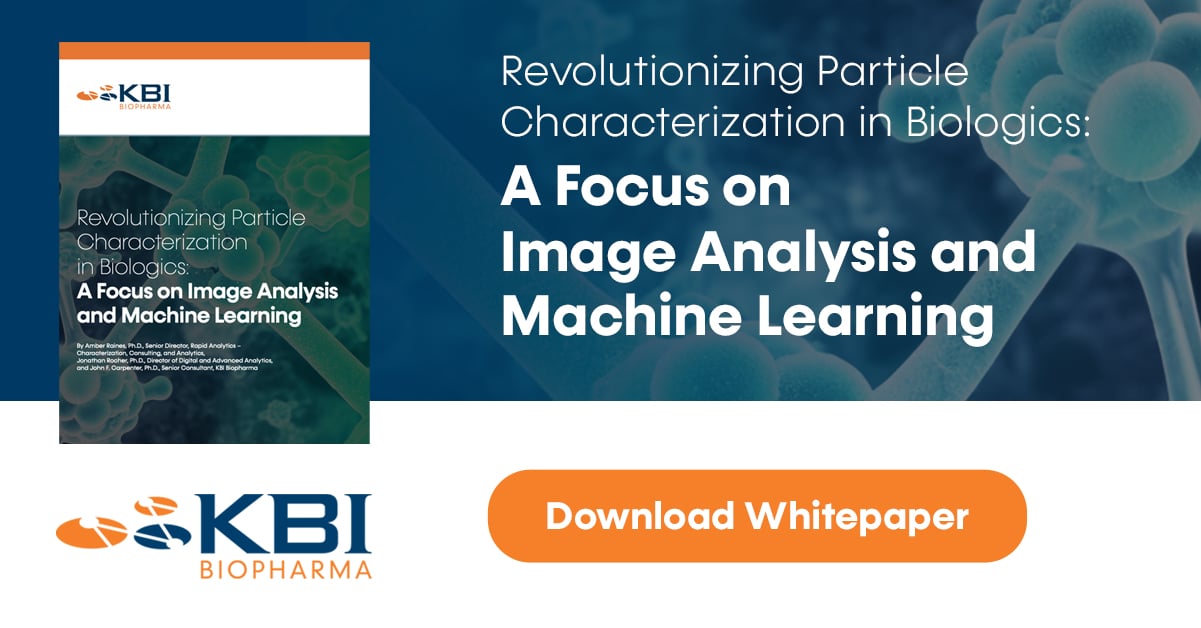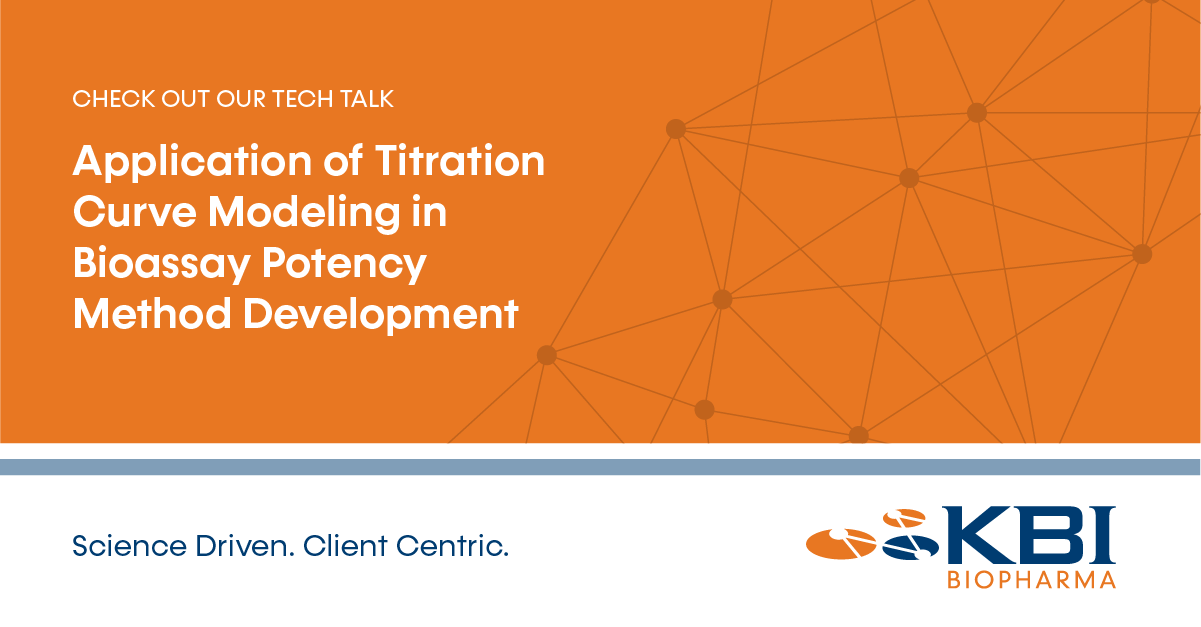Biopharmaceuticals are a significant growth area for the pharmaceutical industry, as these therapeutics can address unmet medical needs through novel mechanisms of action. A wide range of biopharmaceuticals is currently in clinical development, including monoclonal antibodies (mAbs), recombinant proteins, and Fc fusion proteins. These biomolecule-based therapies can offer significant therapeutic benefits and have numerous applications in oncology, immunology, neurology, and inflammation-based disorders, among others.

Today’s pharmaceutical industry is a competitive landscape for biopharma companies, with a high cost of entry and the need for substantial financial investments in research and development (R&D). Pharmaceutical companies are looking to produce new biomolecule-based therapies at lower prices and under faster timelines than ever before. Drug-to-market time is reduced through real-time process analytical tools and techniques.1-3
KBI Biopharma, a Contract Development Manufacturing Organization (CDMO), has a team of experts who are streamlining and revolutionizing the process development of biomolecules every day. Our Downstream Process Development Team at our Durham, North Carolina location recently explored implementing a FlowVPE system to rapidly determine dynamic binding capacity for the capture purification step of different classes of mAbs and fusion proteins. This has helped realize substantial time and cost savings associated with downstream process development of biomolecules, and their work was published in Biotechnology Progress (Volume 38, Issue 2).
Dynamic Binding Capacity (DBC), also known as Protein Binding Capacity (PBC) or target volume, measures the amount of target protein that a particular affinity resin can capture. This is an important parameter that affects the overall performance of protein purification for downstream applications such as affinity purification and liquid chromatography – it can also be used to determine the loading capacity of the resin.
The capture step is one of the first investigations to develop a downstream process for biopharmaceuticals. Protein A resins, in particular, are often used as they offer high-yield and high-purity streams in a single step – which simplifies process development downstream of capture – but the cost of these affinity resins is an ongoing challenge in large-scale cGMP manufacturing. A key goal of downstream process development is to maximize utilization of the binding capacity to keep the column size small for an economical process. Historically, DBC determination is a drawn-out and laborious process – and the KBI team wanted to find a way to streamline this process using variable pathlength technology to determine the DBC of affinity chromatography resins to produce reliable data more effectively and efficiently.
We had the opportunity to speak with the KBI team, who published their results in the paper Application of inline variable pathlength technology for rapid determination of dynamic binding capacity in downstream process development of biopharmaceuticals. Their work provides a verified protocol and comprehensive analysis for rapidly determining DBC for various molecules (including mAbs and fusion proteins) on capture chromatography resins using the FlowVPE spectrophotometer based on inline variable pathlength technology.4
What did you and the team hope to learn when you began this research?
We had this powerful instrument based on a novel principle of inline variable pathlength technology, the FlowVPE. We already had extensive experience in and knowledge of the capabilities of variable pathlength technology for measuring both very low and very high protein concentrations from our use of the SoloVPE instrument, which works on the same principle. We were hoping to understand how we could apply the FlowVPE technology to determine dynamic binding capacity for affinity chromatography resins, which is something that had not been demonstrated previously in the literature. Our goal was to use this technology in our everyday workflow to increase the overall efficiency of downstream development.
What is the most surprising thing you encountered while doing this research?
The most surprising thing to the team was how quickly we could generate presentable data. With the work we were performing on the FlowVPE, we could generate and analyze data the same day the instrument was used.
Did you encounter any stumbling blocks or challenges along the way?
Initially, we were not seeing great results with this method when working with low titer feed streams. The data analysis was also a challenge at first. We were able to resolve both of these issues, however, by working in coordination with the application scientists for the FlowVPE instrument.
What is the most impactful thing that you learned in the course of your work?
This method of determining DBC accelerates the process development and provides more accurate data due to higher resolution. This discovery has vast applicability, and we are excited about leveraging this in various ways to add efficiencies to many different processes.
What new knowledge do you hope people who read your team’s research will walk away knowing?
Inline variable pathlength technology is a very empowering technology, and at KBI, we have been able to leverage this to add a lot of efficiency to our processes. We have successfully applied this knowledge to simplify an otherwise very time-consuming and tedious process of DBC determination. Adopting this technique leads to accurate data generation and provides a way of automation that is mostly operator-independent.
If you are interested in learning more about KBI’s work in process development, you can reach out to our team. Our sincere thanks to the Downstream Process Development Team at our Durham, NC location.
References and Further Reading:
- Wasalathanthri D, Rehmann MS, West JM, Borys MC, Ding J, Li ZL. Paving the way for real-time process monitoring in biomanufacturing. Am Pharm Rev. 2020; 23(5): 54- 58.
- Zydney AL. Perspectives on integrated continuous bioprocessing - opportunities and challenges. Curr Opin Chem Eng. 2015; 10: 8- 13
- (2004). Guidance for industry, PAT-A framework for innovative pharmaceutical development, manufacturing and quality assurance. http://www.fda.gov/cder/guidance/published.html
- Bhangale, RP, Ye, R, Lindsey, TB, Wolfe, LS. Application of inline variable pathlength technology for rapid determination of dynamic binding capacity in downstream process development of biopharmaceuticals. Biotechnol. Prog. 2022; 38( 2):e3236. doi:10.1002/btpr.3236

 KBI Biopharma
KBI Biopharma



